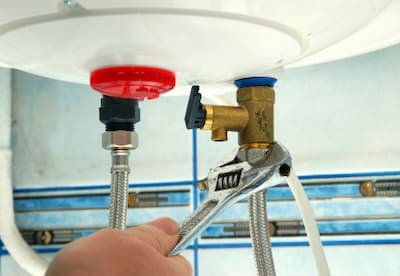Steps on How to Maintain Your Home's Hot Water System ProperlyEfficient Techniques for Maintaining Your Home's Hot Water System
Steps on How to Maintain Your Home's Hot Water System ProperlyEfficient Techniques for Maintaining Your Home's Hot Water System
Blog Article
Everybody may have their personal theory on the subject of Tips on Maintaining a Water Heater.

Warm water is necessary for day-to-day convenience, whether it's for a rejuvenating shower or cleaning meals. To ensure your hot water system runs effectively and lasts much longer, normal upkeep is crucial. This short article gives sensible pointers and understandings on exactly how to maintain your home's warm water system to stay clear of disturbances and expensive repair services.
Introduction
Maintaining your home's warm water system may seem daunting, but with a couple of straightforward steps, you can ensure it runs efficiently for several years to find. This guide covers everything from recognizing your warm water system to DIY maintenance pointers and recognizing when to hire specialist assistance.
Value of Preserving Your Hot Water System
Routine maintenance not only expands the life expectancy of your hot water system yet likewise ensures it runs effectively. Overlooking upkeep can cause decreased performance, greater energy expenses, and even early failing of the system.
Indications Your Hot Water System Demands Maintenance
Recognizing when your warm water system needs focus can avoid major issues. Watch out for signs such as irregular water temperature, weird sounds from the heater, or rustic water.
Recognizing Your Hot Water System
Prior to diving into upkeep tasks, it's helpful to comprehend the basic elements of your warm water system. Generally, this consists of the water heater itself, pipelines, anode rods, and temperature level controls.
Monthly Upkeep Tasks
Regular month-to-month checks can aid catch small issues before they rise.
Flushing the Hot Water Heater
Flushing your hot water heater eliminates sediment accumulation, boosting effectiveness and lengthening its life.
Checking and Changing Anode Rods
Anode rods avoid rust inside the container. Inspecting and changing them when broken is essential.
Evaluating and Adjusting Temperature Setups
Adjusting the temperature level settings makes sure optimal performance and security.
Do It Yourself Tips for Upkeep
You can perform a number of upkeep jobs yourself to keep your warm water system in leading condition.
Checking for Leakages
Regularly check pipelines and connections for leaks, as these can cause water damages and higher expenses.
Testing Pressure Alleviation Valves
Examining the stress relief valve ensures it works appropriately and prevents excessive pressure accumulation.
Protecting Pipes
Protecting warm water pipelines reduces heat loss and can save power.
When to Call a Specialist
While do it yourself upkeep is helpful, some problems require professional proficiency.
Facility Issues Needing Professional Help
Examples include major leakages, electrical problems, or if your water heater is consistently underperforming.
Routine Specialist Upkeep Perks
Expert upkeep can consist of complete inspections, tune-ups, and guaranteeing conformity with security criteria.
Conclusion
Regular maintenance of your home's hot water system is vital for performance, durability, and price savings. By adhering to these tips and understanding when to look for professional assistance, you can make certain a reliable supply of hot water without unanticipated disruptions.
How to Maintain an Instant Hot Water Heater
Before tinkering with your hot water heater, make sure that it’s not powered on. You also have to turn off the main circuit breaker and shut off the main gas line to prevent accidents. Also turn off the water valves connected to your unit to prevent water from flowing into and out of the appliance. 2. When you’re done, you have to detach the purge valves’ caps. These look like the letter “T” and are situated on either side of the water valves. Doing so will release any pressure that has accumulated inside the valves while at the same time avoid hot water from shooting out and burning your skin. 3. When the purge valves’ caps are removed, you have to connect your hosing lines to the valves. Your unit should have come with three hoses but if it didn’t, you can purchase these things from any hardware or home repair shops. You can also get them from retail stores that sell water heating systems. Read the user’s manual and follow it to complete this task properly. When the hosing lines are connected, open the purge port’s valves. 4. You should never use harsh chemical cleaners or solutions when cleaning your unit. Make use of white vinegar instead. It should be undiluted and you’ll probably use about 2 gallons. 5. Now flush your water heater. This task should probably take about 40 minutes. We can’t give you specific directions for this because the procedure is carried out depending on the type, model and brand of your heater. With that being said, refer to the user’s manual. 6. When you’re done draining the unit, you have to turn off the purge port valves again. Remove the hosing lines that you earlier installed on each of the water valves. Put the valve caps (purge port) back in their respective places and be very careful so as not to damage the rubber discs that are found inside these caps. 7. Now that everything’s back in place, check your user’s manual again to find out how to reactivate your water heating system. 8. Once it is working, turn one of your hot water faucets on just to let air pass through the heater’s water supply pipes. Leave the tap on until water flows smoothly out of it. https://www.orrplumbing.com/blog/2014/september/how-to-maintain-an-instant-hot-water-heater/

Do you appreciate reading about Tips on Maintaining a Water Heater? Place a remark further down. We'd be glad to know your opinion about this review. Hoping that you come back again in the future. If you please take the opportunity to share this content if you appreciated it. Thanks a lot for going through it.
Check This Out Report this page